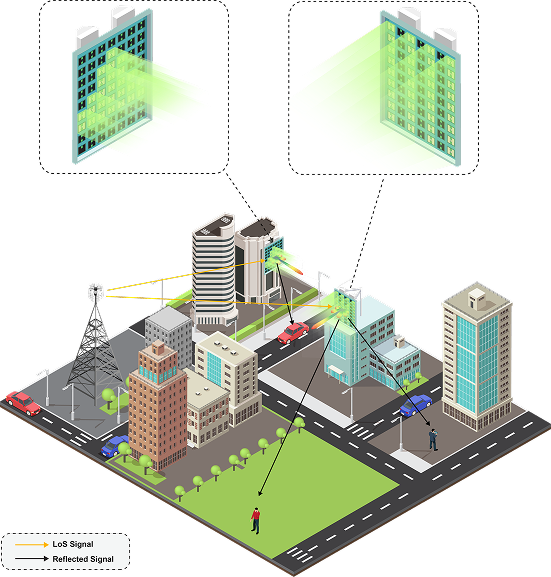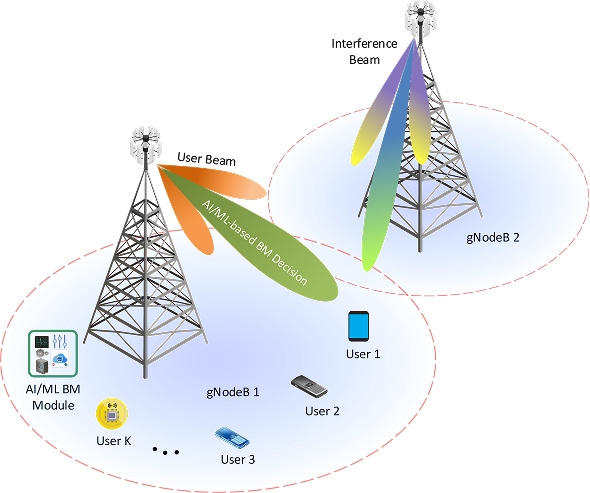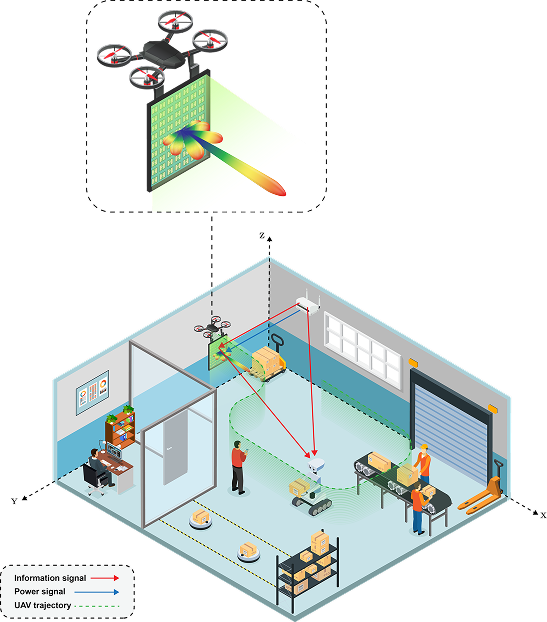1. Shape-Adaptive Reconfigurable Holographic Surfaces for Multi-User Networks
▶ This project introduces a novel shape-adaptive framework for Reconfigurable Holographic Surfaces (RHS)—a next-generation evolution of RIS. Unlike conventional RIS systems that statically apply phase shifts to pre-defined surfaces, RHS supports dynamic spatial shaping by selectively activating only the most effective elements from a set of predefined shapes (e.g., rectangular, striped). This selective geometry adaptation maximizes signal coverage, interference suppression, and energy efficiency.
We formulate a non-convex optimization problem that jointly configures RHS shape selection, active beamforming at the access point, and passive beamforming at the RHS. An alternating optimization (AO) algorithm decomposes the problem into tractable subproblems, allowing efficient configuration across different RHS-user layouts. Simulations show that our shape-adaptive RHS deployment outperforms fixed-shape designs in throughput and resilience to blockage, marking it as a promising component in 6G network architectures.
READ FULL PAPER2. Deep Learning for Beam Prediction and CSI Compression in Massive MIMO and 6G Networks
▶ This project advances the use of deep learning models for two critical tasks in 6G physical layer optimization:
- Fast and scalable CSI prediction via beam-based attention.
- Model generalization across different frequency bands.
We propose a novel deep learning-based beam management framework that significantly reduces training overhead while maintaining high reliability in mmWave and massive MIMO deployments. In parallel, we explore autoencoder designs with variable code sizes to improve CSI compression performance and generalization—aligned with the evolving requirements of 3GPP standardization.
READ FULL PAPER3. Energy-Efficient SWIPT Optimization for UAV-Assisted THz Communications
▶ This project addresses the design of energy-efficient and agile THz communication networks enabled by miniature UAVs equipped with holographic surfaces. Given the directionality and high path loss in the terahertz band, we propose a joint optimization framework that accounts for UAV trajectory planning, beamforming control, and Simultaneous Wireless Information and Power Transfer (SWIPT) to maximize throughput while preserving onboard energy reserves.
Our approach combines non-orthogonal multiple access (NOMA) with holographic beamforming and integrates resource allocation strategies based on mixed-integer nonlinear programming (MINLP). The framework supports real-time decision-making in dynamic aerial environments and demonstrates superior performance in spectral and energy efficiency, forming a blueprint for sustainable 6G aerial access networks.
READ FULL PAPER

